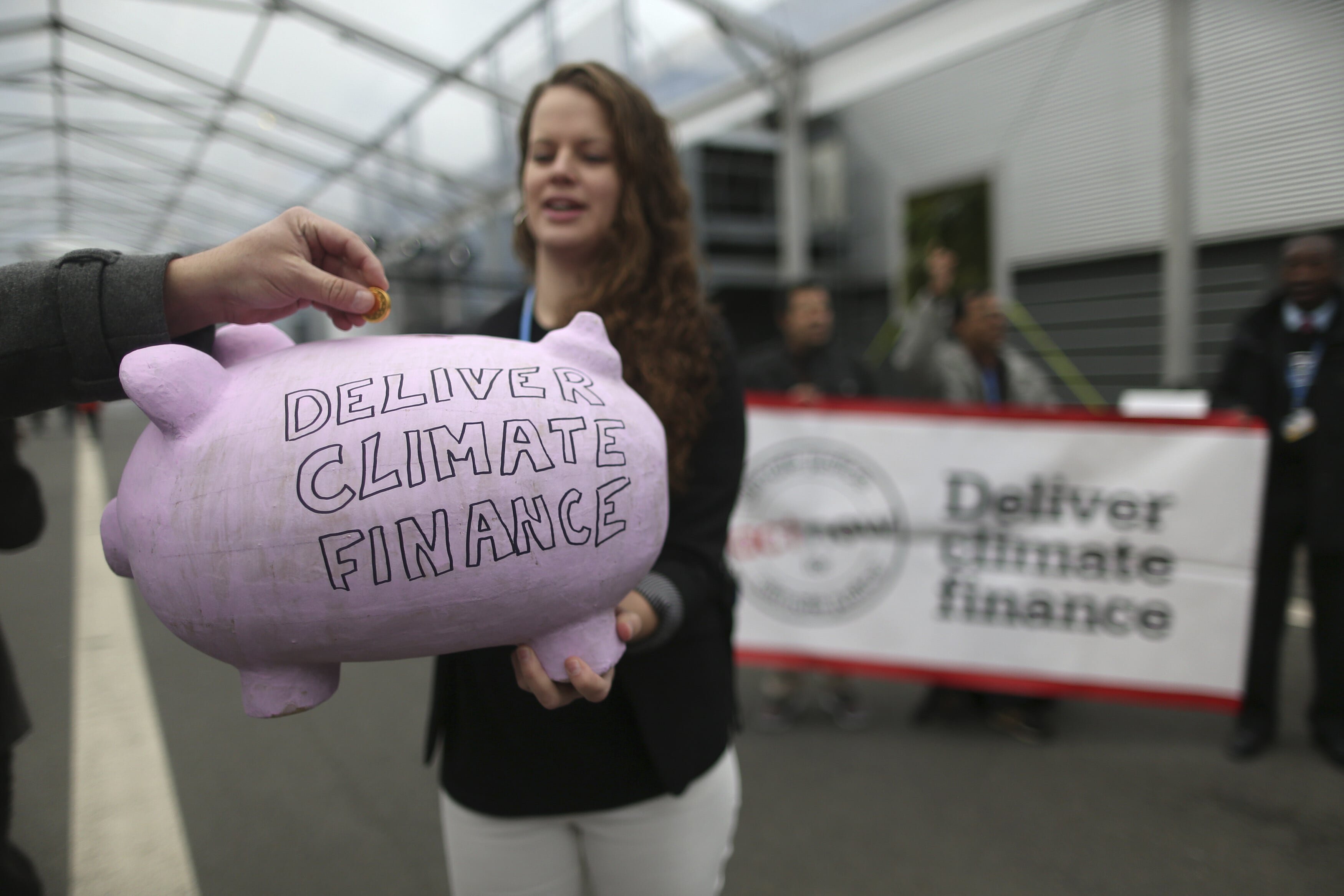Should countries club together to tackle climate change?

The latest round of UN climate talks held last December in Lima, Peru saw delegates from over 190 nations clinch a deal necessary to move forward with efforts to agree on a new climate agreement by next year’s conference scheduled for Paris, France. While there are encouraging signs that Paris might yield a meaningful new agreement – with many more countries engaged, more flexible regime designs in mind, and serious talk around new funds – this does not change the reality that the UN Framework Convention on Climate Change (UNFCCC) is geared towards tackling a problem that is structurally extremely difficult to solve.
Serious mitigation of emissions requires paying upfront costs for distant and uncertain benefits. Ultimately, it requires that all nations cooperate, and yet under most current contexts each country will have substantial incentives to defect since low-carbon energy is currently more expensive than the energy technologies that exist. Moreover, because energy costs are such a big part of the economic competitiveness, there can be strong incentives to avoid bearing the cost of decarbonisation.
While the choice of organising the global climate change talks within the UN system has brought legitimacy to the process, it has also served as a cover for inaction, and led to negotiations becoming bogged down in the business of complex trade-offs as delegates try to secure a deal without giving way on too many national preferences. Big groups are also problematic if some countries actively try to block cooperation and there is of course the sheer diversity in preferences and goals to contend with.
Framing climate deals in smaller groups – designed in a way that encourages expansion of membership and linkages among groups over time – could be much more effective and complement the maxilateral UN process. Moreover, while some climate club efforts are already underway, what if such action in smaller groups was pushed more aggressively?
Six key tasks climate clubs could perform
One of the most important challenge for long-term management of climate change is getting countries that do not want to spend their own resources on mitigation to do more. I call these “reluctant” countries. Unfortunately the role of reluctant countries in driving climate change is now much larger with these nations already accounting for more than half of global emissions. The first thing that clubs could help do is provide a forum for enthusiastic countries to “do the deals” that would get reluctant countries to make bigger efforts. For example, the US is in the midst of efforts to convince India to accept tighter regulations on hydrofluorocarbons (HFCs) in the Montreal Protocol.
As a general rule, the higher the complexity, the smaller the group has to be. Evidence from the experiences of the Group of Eight (G8) and Group of Twenty (G20) suggests that groups of five to twelve members are probably about right. To be effective, such groups will need to find ways to create “club goods,” that is, goods whose benefits accrue to club members but which can be excluded – at least partially – from outsiders. Examples might include low-tariff zones for low-emission energy technologies, a benefit that would flow to countries that agreed to the tariff regime, but which could be excluded from others. For countries with emissions trading schemes, climate clubs could be a useful forum for the crucial yet highly complex task of linking systems, which has proved slow thus far. The importance of unilateral action should also not be discounted. The US draft regulations tackling carbon emissions from existing power plants, released last June, did a huge amount to bring good will to the UN deal-making process. Efforts to entice reluctant countries might also emerge from sub-state actors, such as cities or provincial governments, whose role should be to encourage states to do more than they would otherwise.
A second task for clubs could be to deal with trade in embodied carbon. Compared to when serious climate diplomacy began over twenty years ago, trade in embodied carbon has exploded, mainly due to the rise of export manufacturing in China and other emerging economies. For example, in 1990 trade in embodied carbon between developed and developing countries was just one-tenth of what it is now, according to the Intergovernmental Panel on Climate Change (IPCC). In a globalised economy large amounts of embodied carbon creates incentives for leakage, in other words, where countries avoid the cost of emissions limits thereby attracting growth and investment at the cost of others. A first option for a club in this area would be to introduce some discipline on unilateral border measures, paying heed to the advice trade lawyers and strategists have offered on how these can remain compatible with the WTO. Secondly, a club could use better accounting around emissions statistics using a whole economy approach, which would help to showcase the effects of trade.
Another task for clubs would be to build conditional commitments, which help to lock in what countries have already agreed to do, while also propelling them to pledge even more when they see the benefits of cooperation become tangible. While mitigation pledges are emerging at the UNFCCC level, known as intended nationally determined contributions (INDCs), a number of nations at the Lima climate talks blocked a proposals for a dialogue peer review process. In this context perhaps working in smaller groups to outline conditional pledges and review processes may prove more comfortable.
Given that spending on innovation and outputs from innovation worldwide is concentrated in a few countries this is another ideal topic for small clubs. Joint programmes such as those announced between the US and China, for example, focusing on clusters of technologies such as carbon capture, use and sequestration (CCS) generate great benefits for both partners. For most technologies it will be important to think strategically about how to involve the private sector. Firms in highly concentrated industries tend to recover a greater benefit from effective pledges. Working with firms will also require a mental shift for some governments, moving from a scenario where all comers are treated equally, to promising credible rewards for some following investment in new technologies.
One of the strongest case for clubs lies in the ability of smaller groups to develop and demonstrate solutions to hard problems. A good example here would be to tackle short-lived pollutants (SLCPs) such as soot, methane, and hydrofluorocarbons (HFCs) because demonstrable benefits such as improvement of air quality are more tangible with these. And while it will not be possible to stop warming through reducing SLCPs alone, movement forward on a climate-related problem could demonstrate the credible action is feasible, with such logic already inspiring a group of countries to take action in this area through the Climate and Clean Air Coalition (CCAC).
Finally, small clubs could be a useful place to look at how the international community might wisely spend money on climate adaptation, as the issue rises up the international agenda. Norway’s climate fund might be a good model to start with. A group of donors puts a large and credible funding promise into play, along with credible offers of technical assistance, which developing countries then competing to make best offers.
Overall the idea of getting started in small groups is not new. What is different today is the overall realisation that the broad UN-based approach to cooperation has not, by itself, worked that well so far. A key way of encouraging the club-approach would be for governments to agree, at the Paris meet in December, to facilitating an umbrella agreement of agreements to wrap around the multilateral deal. Some discipline for clubs would also be needed, for example, basic standards, mutual recognition across club commitments, and serious peer review. Some strategic thinking will also be needed to identify which countries are likely to make the effort to create and join certain clubs.
And while one cannot stop climate change and totally transform the world’s energy system unless all countries are ultimately involved, it is both possible and necessary that countries’ get started on the mounting task ahead, working on the complex deal-making by making progress in smaller groups.
This article is published in collaboration with The e15 Initiative. Publication does not imply endorsement of views by the World Economic Forum.
To keep up with the Agenda subscribe to our weekly newsletter.
Author: David G. Victor is a Professor at University of California, San Diego.
Image: The sun is seen behind smoke billowing from a chimney of a heating plant. REUTERS/Stringer
Don't miss any update on this topic
Create a free account and access your personalized content collection with our latest publications and analyses.
License and Republishing
World Economic Forum articles may be republished in accordance with the Creative Commons Attribution-NonCommercial-NoDerivatives 4.0 International Public License, and in accordance with our Terms of Use.
The views expressed in this article are those of the author alone and not the World Economic Forum.
Stay up to date:
Climate Crisis
Related topics:
Forum Stories newsletter
Bringing you weekly curated insights and analysis on the global issues that matter.
More on Climate ActionSee all
Tom Crowfoot
July 30, 2025






